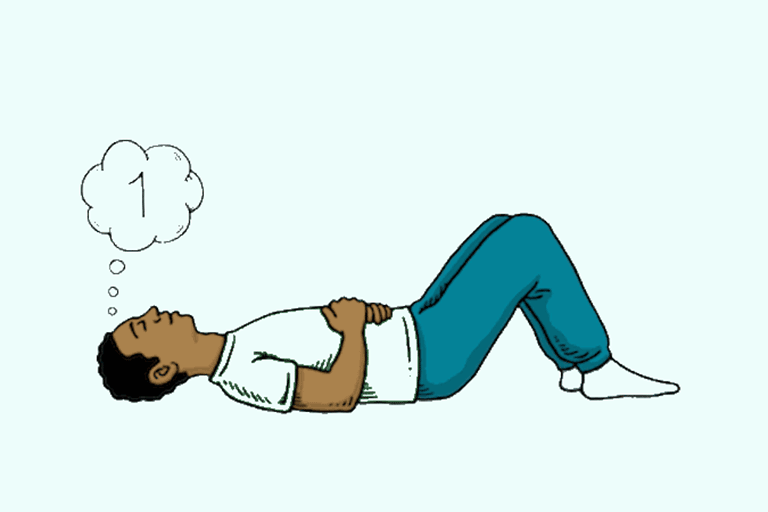Coherent Breathing Technique to Help Calm You Down
Anyone who's taken a yoga class or meditated -- even if they haven't -- knows that breathing is the predominant factor in both activities.
Ancient yogis and Buddhists knew that it's possible to calm or tweak ourselves by changing the depth and pacing of our breath. Over the past few years mental-health professionals have figured this out as well. Some are starting to recommend breathing techniques to their patients with anxiety, post-traumatic stress disorder, and depression.
According to an article in Vice, Cynthia Stonnington, chair of the department of psychiatry and psychology at the Mayo Clinic in Phoenix, Arizona, says she often introduces clients to breathwork because “many people find benefit, no one reports side effects, and it’s something that engages the patient in their recovery with actively doing something.”
According to a New York Times Article:
"Consciously changing the way you breathe appears to send a signal to the brain to adjust the parasympathetic branch of the nervous system, which can slow heart rate and digestion and promote feelings of calm as well as the sympathetic system, which controls the release of stress hormones like cortisol."
The article goes on to explain:
"When you take slow, steady breaths, your brain gets the message that all is well and activates the parasympathetic response. When you take shallow rapid breaths or hold your breath, the sympathetic response is activated."
The type of breathwork that's proving to be one of the more beneficial is so simple you can learn it in minutes. “Coherent breathing,” was developed by a pair of psychiatrists in New York City who found it to be so valuable for severe mental conditions that they’ve used it with survivors of genocides, earthquakes, tsunamis, and other global disasters. The breath technique is also being used by veterans in at least two Veterans Administration Hospitals in the US.
Coherent breathing came as a result of years of studying the ancient breathing practices of indigenous people around the world, from yoga and qi gong to African, Hawaiian, and Native American traditions. It was co-developed by Patricia Gerbarg, assistant clinical professor of psychiatry at New York Medical College, along with her husband Richard Brown, associate professor of clinical psychiatry at Columbia University College of Physicians and Surgeons.
A study published in the Journal of Alternative and Complementary Medicine in 2017, led by researchers at Boston University, asked 30 patients with major depression to regularly practice the breathing method, along with Iyengar yoga. After three months, depressive symptoms had significantly declined, as measured by a standard depression inventory test.
Gebarg and Brown recommend trying this exercise every day, or multiple times a day -- particularly during periods of stress.
Here's the technique as posted on Huffpost:
Lie down with eyes closed.
With the mouth closed, breathe in gently and smoothly through the nose for six seconds. “It is not necessary to overfill your lungs,” says Gerbarg. “The breathing should be as gentle as possible.”
Breathe out just as gently and smoothly; there’s no need to “expel air forcefully” she says, also for six seconds. Try an iPhone app, CD or MP3 to help you keep the pace. (You can find examples at coherence.com.)
Continue this pattern for five or 10 minutes.
You can find information about the technique and timers to prompt you during the technique on their website, coherent.com. Don't be turned off by the website. It's unfortunately hideous, but the information is solid.
Read more about this at Vice, Huffington Post, coherent.com, bmedreport, and The New York Times (which also has a couple of other techniques).
UPDATE: So a few months after posting this, which in fact does link to the original Huffington Post articles, and the Vice article, and to coherent. com, etc., I get not one, but two emails from Taylor Elliott, who claims to have invented breathing. This technique is somehow trademarked by Elliott, which only proves how easy it is to claim ownership of something. Including a Buddhist technique that’s been around for thousands of years, helping people and providing enlightenment, for free and without trademarks or claims to ownership. Maybe Mr. Elliott didn’t realize that this site was created as a resource for addicts and alcoholics, who without techniques like this could live painful emotional and spiritual lives. My guess is that someone who trademarks breathing probably doesn’t much care.
I was tempted at first to simply take down the entire thing and replace it with the exact same technique that John Kabat Zinn, Thich Nhat Hanh, The Dalai Lama, Joseph Goldstein, and thousands of meditators teach while they extol the virtues and benefits of breathing, but why?
Instead, I’m going to paste Elliott’s email to me below and add this to the next weekly newsletter that goes out to all the readers.
Here’s the email, he though important enough to send twice, but then again he says “we ask these three things” and only states two, so who knows.
Hi ,
Nice to make your acquaintance and thank you for your interest in Coherent Breathing.
This is Taylor Elliott, Vice President, COHERENCE LLC.
As owners of Trademarks and Copyrights pertaining to Coherent Breathing we are legally responsible for reviewing use thereof.
Its come to our attention that your article:https://www.recoverybinder.org/blog/coherent-breathing-technique-to-help-calm-you-down
To use COHERNECE content we ask these three things:
1. You state " Coherent Breathing is a registered trademark of COHERENCE LLC. "
2. You state that " Stephen Elliott is the originator of the Coherent Breathing method "
Thankyou for your support and attention to the matter. If you have any questions please reply.
Regards
Taylor Elliott, VP COHERNCE LLC.






